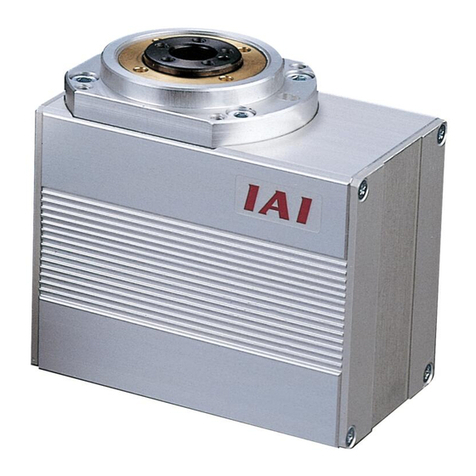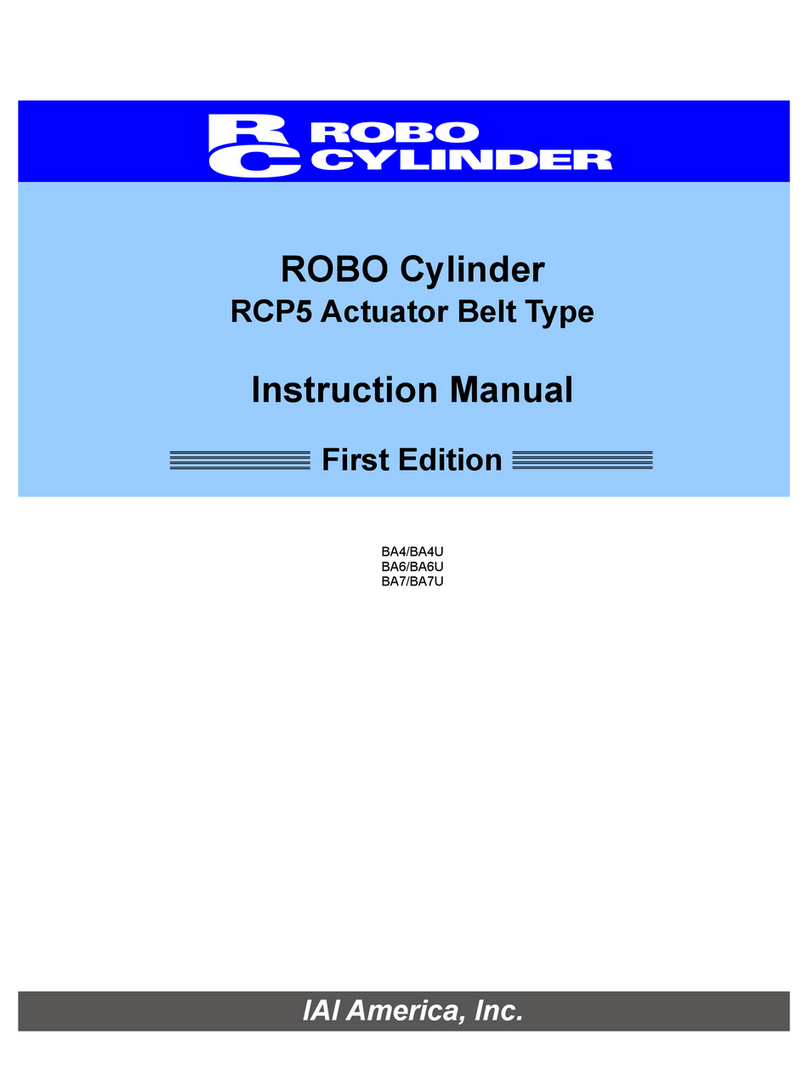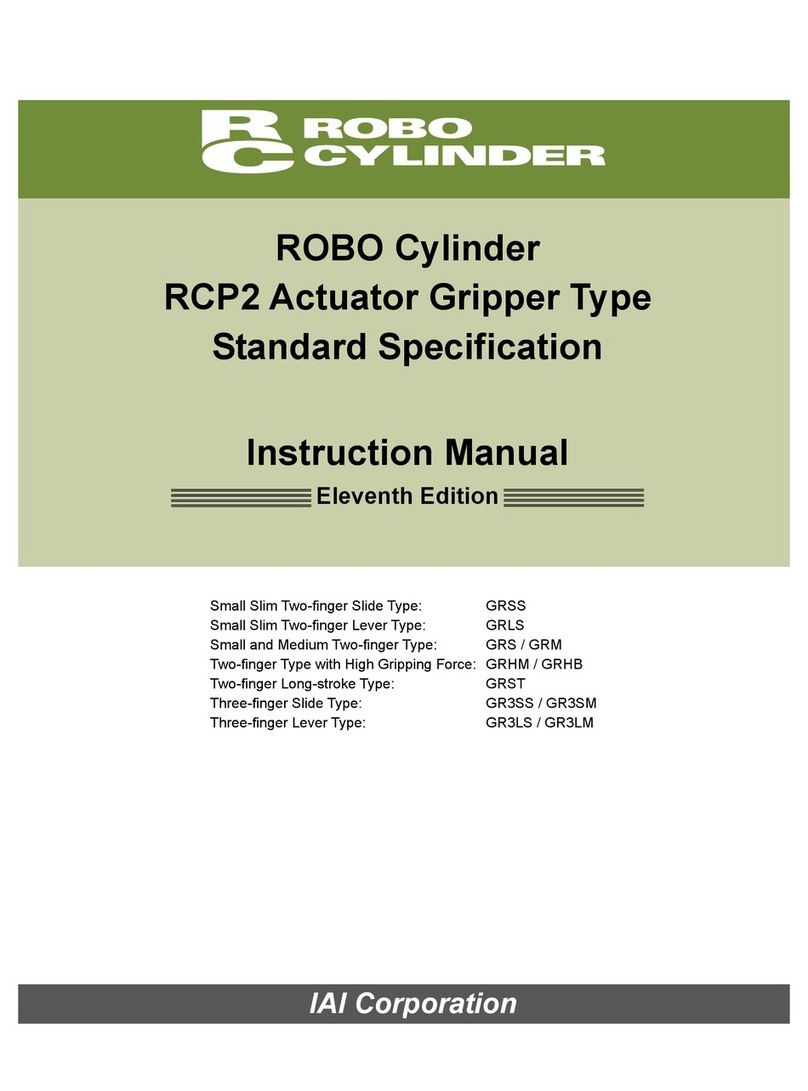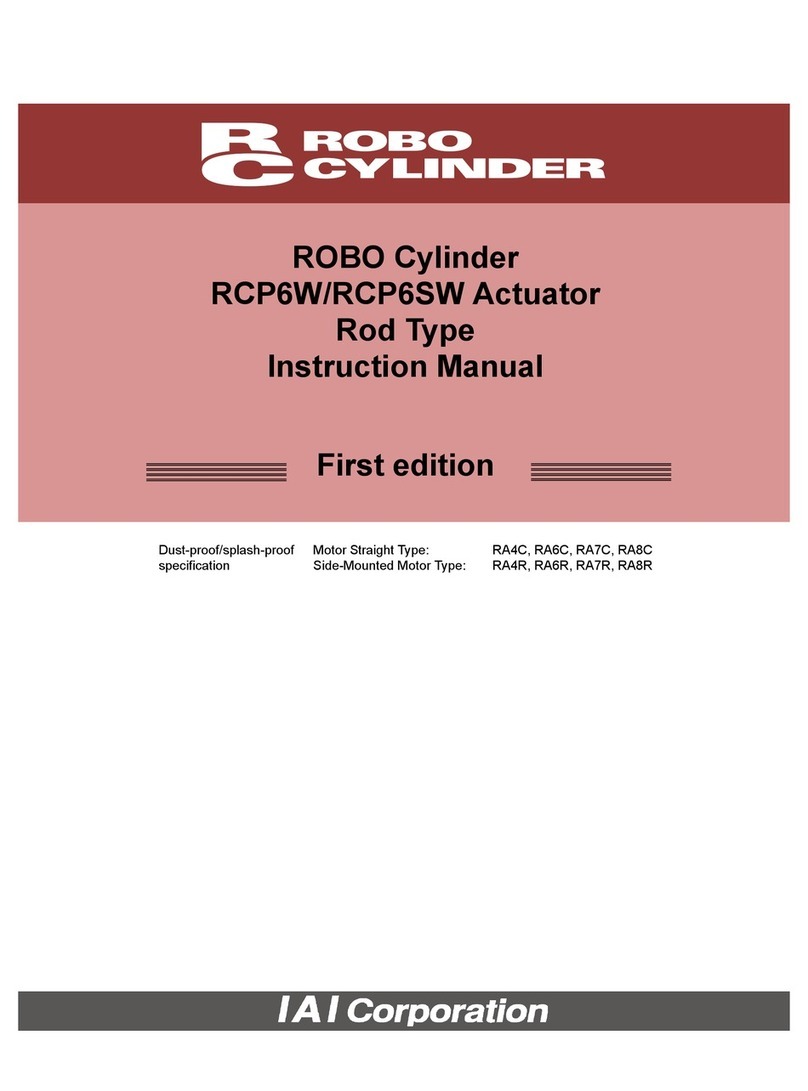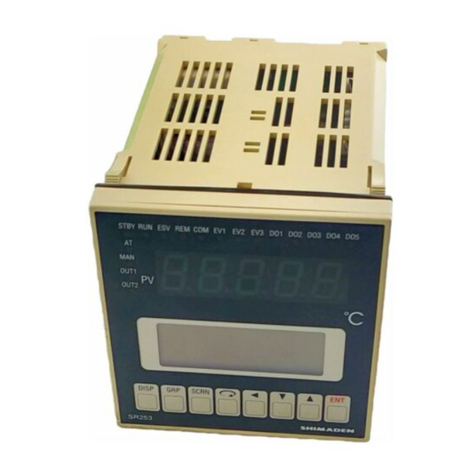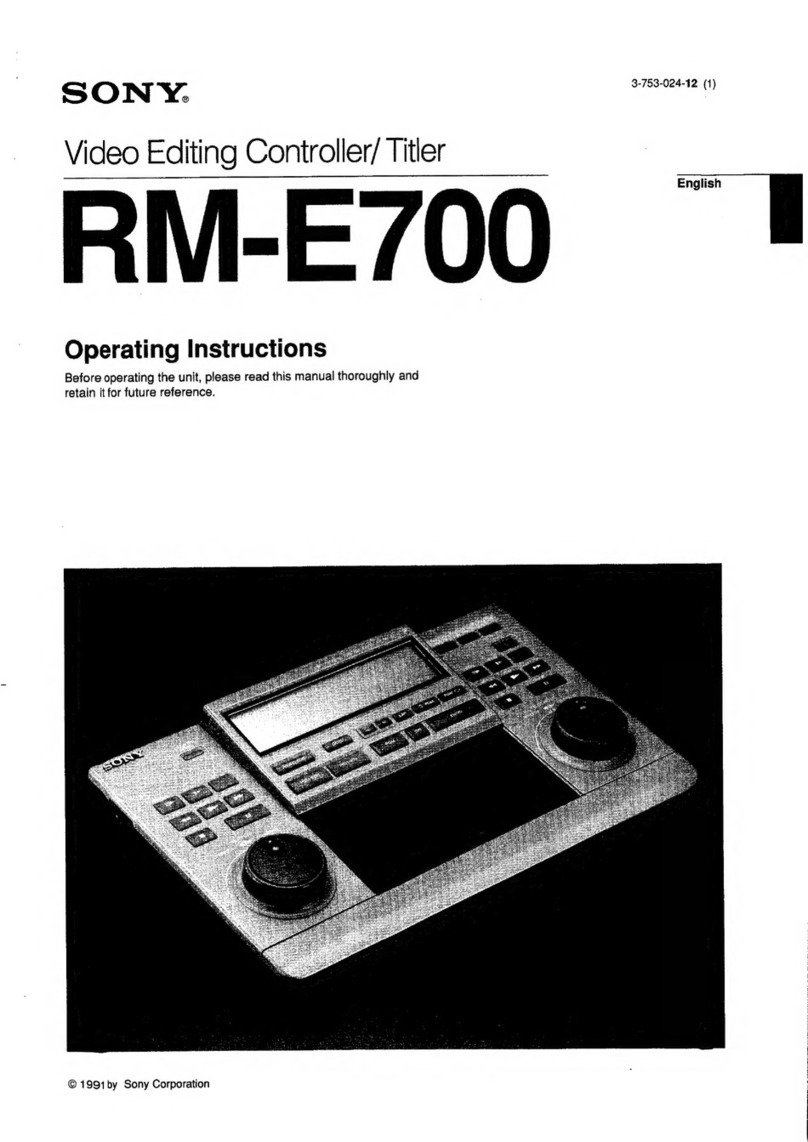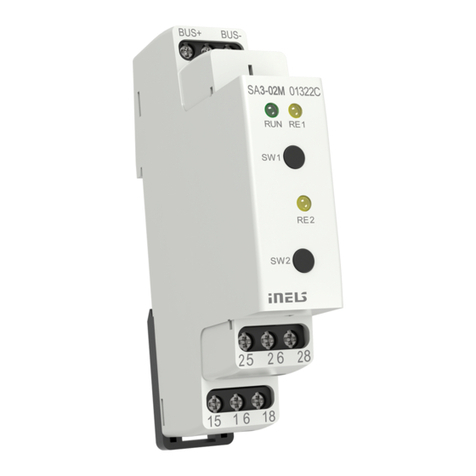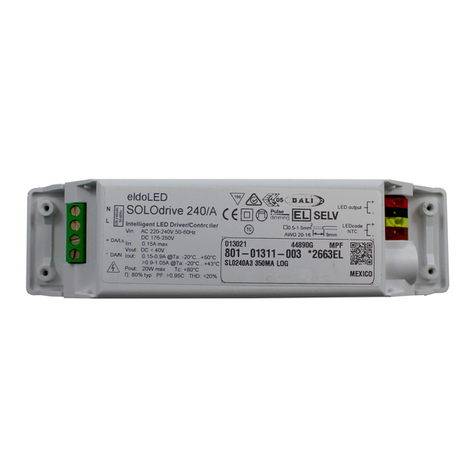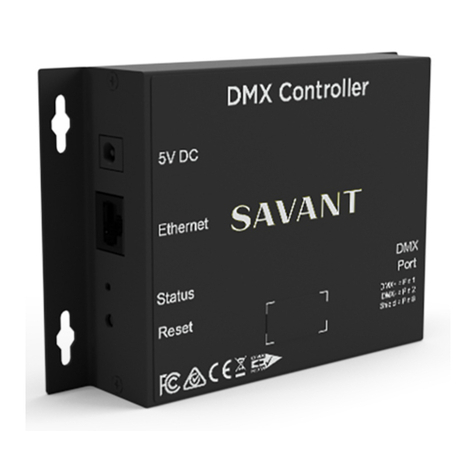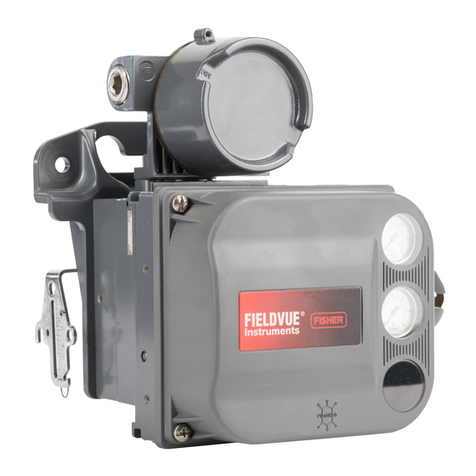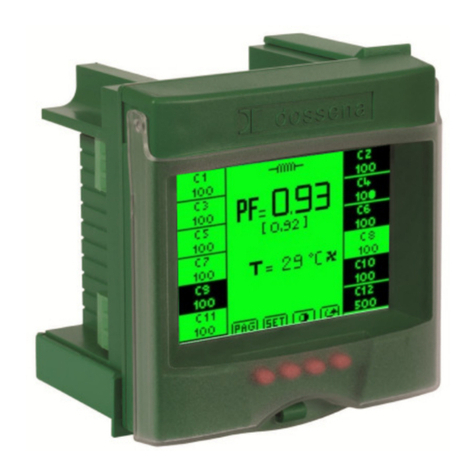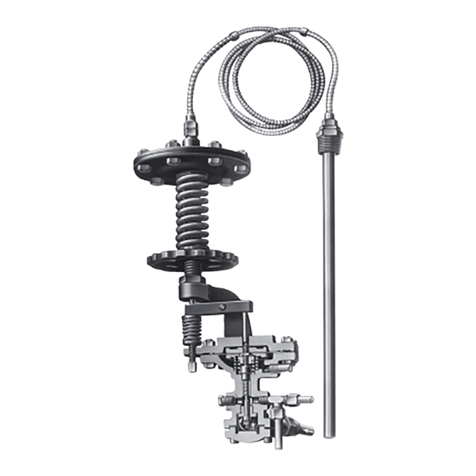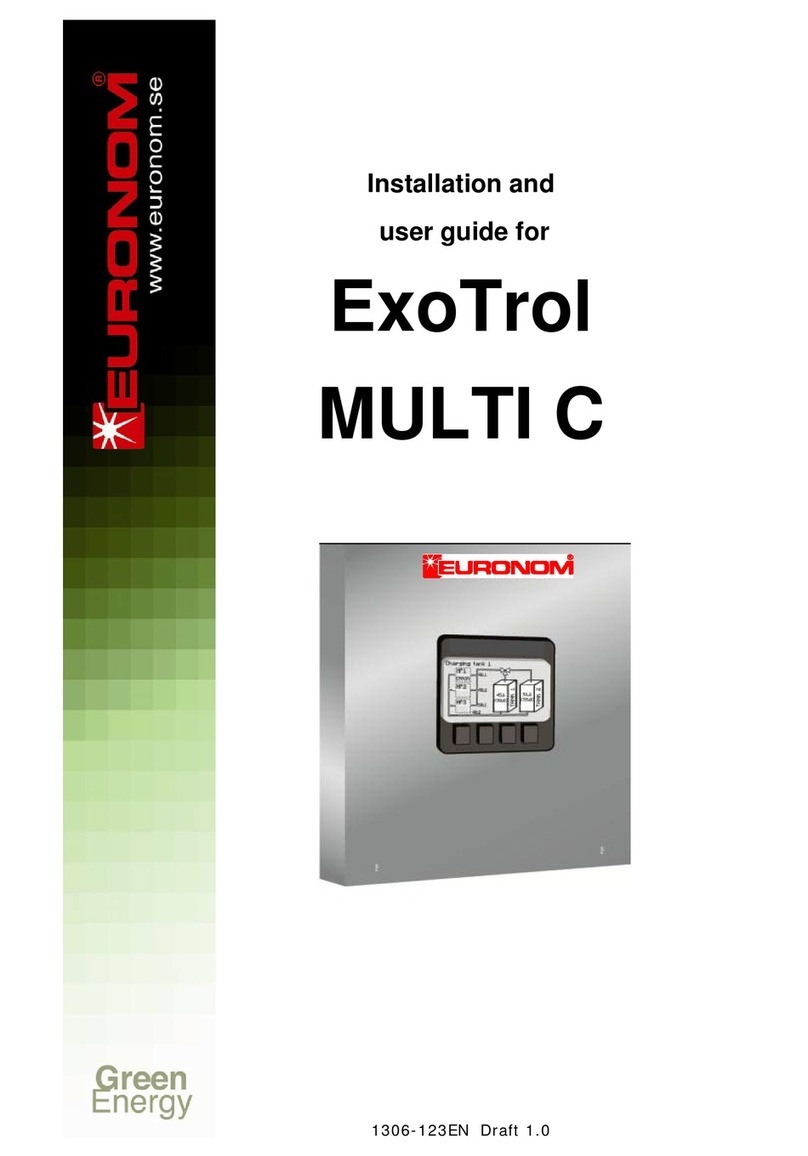ROBO Cylinder RCP2W User manual

IAI America, Inc.
RCP2W
ROBO Cylinder Actuator
Slider, Dust-proof/Splash-proof Type
Second Edition
[RCP2W-SA16C]
Operating Manual

Safety Precautions (Please read before using the product.)
Before installing, operating, maintaining or inspecting this product, please peruse this operating manual as
well as the operating manuals and other related documentations for all equipment and peripheral devices
connected to this product in order to ensure the correct use of this product and connected
equipment/devices. Those performing installation, operation, maintenance and inspection of the product
must have sufficient knowledge of the relevant equipment and their safety. The precautions provided
below are designed to help you use the product safely and avoid bodily injury and/or property damage.
In this operating manual, safety precautions are classified as “Danger,” “Warning,” “Caution” and
“Note,” according to the degree of risk.
Danger Failure to observe the instruction will result in an imminent danger leading to
death or serious injury.
Warning Failure to observe the instruction may result in death or serious injury.
Caution Failure to observe the instruction may result in injury or property damage.
Note The user should take heed of this information to ensure the proper use of the
product, although failure to do so will not result in injury.
It should be noted that the instructions under the Caution and Note headings may also lead to
serious consequences, if unheeded, depending on the situation.
All instructions contained herein provide vital information for ensuring safety. Please read the contents
carefully and handle the product with due caution.
Please keep this operating manual in a convenient place for quick reference whenever needed, and also
make sure that the manual will get to the end-user.
Danger
[General]
zDo not use this product for the following applications:
1. Medical equipment used to maintain, control or otherwise affect human life or physical health
2. Mechanisms and machinery designed for the purpose of moving or transporting people
3. Important safety parts of machinery
This product has not been planned or designed for applications requiring high levels of safety. Use of
this product in such applications may jeopardize the safety of human life. The warranty covers only the
product as it is delivered.
[Installation]
zDo not use this product in a place exposed to ignitable, inflammable or explosive substances. The
product may ignite, burn or explode.
zWhen installing the product, be sure to securely support and affix it (including the work). Failure to do so
may cause the product to tip over, drop or malfunction, resulting in injury.

zNever cut and/or reconnect the cables supplied with the product for the purpose of extending or
shortening the cable length. Doing so may result in fire.
[Operation]
zDo not enter the machine’s range of operation while the product is operating or standing by. The
actuator may move suddenly, causing injury.
zIf you are using a pace maker or other mechanical implant, do not come within one meter of the product.
The strong magnetic field generated by the product may cause the pace maker, etc., to malfunction.
[Maintenance, Inspection, Repair]
zNever modify the product. Unauthorized modification may cause the product to malfunction, resulting in
injury, electric shock, fire, etc.
zDo not disassemble and reassemble the components relating to the basic structure of the product or its
performance and function. Doing so may result in injury, electric shock, fire, etc.
Warning
[General]
zDo not use the product outside the specifications. Using the product outside the specifications may
cause it to fail, stop functioning or sustain damage. It may also significantly reduce the service life of the
product. In particular, observe the maximum loading capacity and speed.
[Installation]
zIf the machine will stop in the case of system problem such as emergency stop or power failure, design
a safety circuit or other device that will prevent equipment damage or injury.
zBe sure to provide Class D grounding for the controller and actuator (formerly Class 3 grounding:
Grounding resistance at 100 Ωor less). Leakage current may cause electric shock or malfunction.
zBefore supplying power to and operating the product, always check the operation area of the equipment
to ensure safety. Supplying power to the product carelessly may cause electric shock or injury due to
contact with the moving parts.
zWire the product correctly by referring to the operation manual. Securely connect the cables and
connectors so that they will not be disconnected or come loose. Failure to do so may cause the product
to malfunction or cause fire.
[Operation]
zBefore operating the moving parts of the product by hand (for the purpose of manual positioning, etc.),
confirm that the servo is turned off (using the teaching pendant). Failure to observe this instruction may
result in injury.
zThe cables offer excellent flexibility, but they are not robot cables. Do not store the cables in a movable
cable duct (cable bearer, etc.) whose bending radius is smaller than the specified dimension.
zDo not scratch the cables. Scratching, forcibly bending, pulling, winding, crushing with heavy object or
pinching a cable may cause it to leak current or lose continuity, resulting in fire, electric shock,
malfunction, etc.
zTurn off the power to the product in the event of power failure. Failure to do so may cause the product
to suddenly start moving when the power is restored, thus resulting in injury or product damage.
zIf the product is generating heat, smoke or a strange smell, turn off the power immediately. Continuing
to use the product may result in product damage or fire.
zIf noise or abnormally high vibration is detected, stop the operation immediately. Continuing to use the
product may result in product damage, malfunction due to damage, runaway machine, etc.

zIf the product’s protective device (alarm) has actuated, immediately turn off the power. Continuing to
use the product may result in injury or product damage due to the malfunctioning product. After turning
off the power, identify and remove the cause of problem, and then reconnect the power.
zDo not step on the product, use it as a footstool or place any object on it. You may accidentally slip or
the product may tip over or drop, resulting in injury. The product may also sustain damage, which may
in turn lead to malfunction, runaway machine, etc.
[Maintenance, Inspection, Repair]
zWhen performing maintenance, inspection, servicing, replacement or other operation relating to the
product, always cut off the power supply completely before commencing work. Also heed the following
precautions:
1. Put up a sign saying “WORK IN PROGRESS. DO NOT TURN ON POWER” or the like, so as to
prevent a third person from inadvertently turning on the power while you are working.
2. If you are working together with other operator or operators on maintenance or inspection, always
exchange verbal cues before turning on/off the power or moving any axis to confirm safety.
[Disposal]
zDo not throw the product into fire. Doing so may cause the product to burst or generate toxic gases.
Caution
[Installation]
zDo not use the product in an atmosphere filled with organic solvent, hydraulic oil containing phosphate
ester, etc. Doing so may cause the product to quickly lose its function or suffer rapid performance
deterioration or shortening of its life.
zDo not use the product in an atmosphere of corrosive gases (such as sulfuric acid and hydrochloric
acid). Doing so may cause the structural strength of the product to drop due to rusting.
zIf the product must be used in any of the following locations, provide sufficient shielding measures. If
not, the product may malfunction.
1. Where large current or high magnetic field generates 2. Where welding is performed or arc discharge occurs
3. Where noise generates due to electrostatic, etc. 4. Where there is a risk of exposure to radiation
zDo not install the product in a location subject to significant vibration or impact (4.9 m/s2or greater). If
significant vibration or impact is applied, the product may malfunction.
zProvide an emergency stop device in a convenient position that can be readily accessed to promptly
actuate an emergency stop should a dangerous situation occur during operation. Failure to do so may
result in injury.
zSecure maintenance space when installing the product. If the required space is not secured, daily
inspection and maintenance cannot be performed, which may lead to unnecessary downtime or product
damage.
zWhen transporting or installing the product, securely support it using a lift or other supporting equipment
or engage multiple operators to work together. Exercise due caution to avoid accidents.
zDo not hold any moving part or cable when installing the product. Doing so may result in injury.
zAlways use IAI’s genuine cable for connection between the actuator and controller. Also use IAI’s
genuine products for all components of your system, such as the actuator, controller and teaching
pendant.
zWhen installing or adjusting the product, put up a sign saying “WORK IN PROGRESS. DO NOT TURN
ON POWER” or the like, so as to prevent a third person from inadvertently turning on the power. If the
power is supplied inadvertently while you are working, you may be electrocuted or injured due to
sudden movement of the actuator.
[Operation]
zTurn on the power to individual equipment one by one, starting from the equipment at the highest level
in the system hierarchy. Failure to do so may cause the product to start suddenly, resulting in injury or
product damage.

zDo not insert a finger or object in the openings in the product. It may cause fire, electric shock or injury.
zDo not bring a floppy disk or other magnetic media within one meter of the product. The magnetic field
generated by the magnet may destroy the data in the floppy disk, etc.
zDo not step on the product, use it as a footstool or place any object on it. It may cause scoring, dents or
deformation of the driving part, resulting in product damage, unintended stopping due to damage, or
performance drop.
[Maintenance, Inspection, Repair]
zWear protective goggles when applying grease to the actuator. Failure to do so may result in eye
inflammation due to spattered grease.
Caution on Use
zNever perform push-motion operation, as it will cause the magnetic coupling to lose alignment.
zThis product cannot be installed vertically or on its side.
Note
[Installation]
zProtection covers or other guards must be provided for the moving parts of the equipment to avoid
direct contact with the operators.
zThe following conditions must be met in order to improve the straightness of the table movement and
ensure the smooth movement of the ball screw and linear guides:
1. Flatness of the mounting surface must be within 0.05 mm.
2. The mounting surface area must be large enough to ensure the rigidity of the actuator.
[Installation, Operation, Maintenance]
zWhen handling the product, wear protective gloves, protective goggles, safety shoes or other necessary
gear to ensure safety.
[Maintenance, Inspection, Repair]
zWhen adding grease, use the specified brand. In particular, pay attention not to mix fluorine grease and
lithium grease, as it may cause damage to the product due to poor lubrication, increased resistance,
etc.
[Disposal]
zWhen the product becomes no longer usable or necessary, dispose of it properly as an industrial waste.
Others
IAI shall not be liable whatsoever for any loss or damage arising from a failure to observe the
items specified in “Safety Precautions.”

Prohibited Handling of Cables
When designing an application system using IAI’s actuators and controllers, incorrect wiring or connection
of each cable may cause unexpected problems such as a disconnected cable or poor contact, or even a
runaway system. This section explains prohibited handling of cables. Read the information carefully to
connect the cables properly.
1. Do not let the cable flex at a single point.
2. Do not let the cable bend, kink or twist.
3. Do not pull the cable with a strong force.
4. Do not let the cable receive a turning force at a
single point.
6. Do not pinch, drop a heavy object onto or cut
the cable.
5. When fixing the cable, provide a moderate slack
and do not tension it too tight.
Steel band
(piano wire)
Bundle loosely.
Use a curly
cable.
Do not use a spiral
tube where the cable
flexes frequently.

Table of Contents
1. Foreword ................................................................................................................. 1
2. Safety Precautions ................................................................................................. 1
2.1 Basic Operating Instructions..............................................................................................1
2.2 Maintenance and Inspection..............................................................................................1
3. Warranty .................................................................................................................. 2
3.1 Warranty Period .................................................................................................................2
3.2 Scope of Warranty .............................................................................................................2
4. Names of the Parts ................................................................................................. 3
5. Transporting and Handling.................................................................................... 4
5.1 Handling the Packed Unit ..................................................................................................4
5.2 Handling the Actuator After It is Unpacked........................................................................4
6. Operating and Storage Environment .................................................................... 5
6.1 Operating Environment......................................................................................................5
6.2 Storage Environment .........................................................................................................5
7. Installation............................................................................................................... 6
7.1 Installing the Main Body.....................................................................................................6
7.2 Mounting Surface...............................................................................................................7
7.3 Installing the Load to the Slider .........................................................................................8
8. Connecting to the Controller................................................................................. 9
9. Notes on Use......................................................................................................... 10
9.1 Restrictions on Operating Condition and Installation Position........................................10
9.2 Precision...........................................................................................................................10
9.3 Duty ..............................................................................................................................10
9.4 Moment Load ...................................................................................................................10
9.5 Splash-proof Performance...............................................................................................11
9.6 Dust-proof Performance...................................................................................................11
9.7 Misalignment....................................................................................................................11
9.8 Filter ..............................................................................................................................12
10. Maintenance.......................................................................................................... 13
10.1 Maintenance Schedule ....................................................................................................13
10.2 Visual Inspection..............................................................................................................13
10.3 Adding Grease.................................................................................................................14
Appendix...................................................................................................................... 15
How to use the home mark......................................................................................... 15


1
1. Foreword
Thank you for purchasing the ROBO Cylinder Actuator.
This actuator adopts a new mechanism called “Magnet Coupling” that connects the ball screw nut and
slider by means of magnetic force to transmit thrust. This allows the ball screw to be completely sealed,
which in turn ensures the actuator’s high dust-proof and splash-proof performance.
Caution: •Never perform push-motion operation, as it will cause the magnetic coupling to
lose alignment due to the structure of this actuator.
•When transporting and storing the actuator, handle it in a horizontal position.
(Refer to page 4 for details.)
•As a rule, the actuator is designed only for be horizontal applications. Do not
install it vertically. (Refer to page 6 for details.)
This manual explains the correct handling, structure, maintenance and other important information
regarding this actuator. Before using your actuator, be sure to read this manual to understand the correct
use. Keep this manual so that you can review the relevant sections when necessary.
Also peruse the operating manual for your controller for additional information regarding the actuator
operation.
2. Safety Precautions
2.1 Basic Operating Instructions
•Please do not attempt to use or operate the actuator in any manner not indicated in this manual or the
controller manual.
•Please be sure to use only the cable provided by IAI to connect the actuator and controller.
•Please do not allow people within the moving range of the unit when it is in operation or when the
power is ON since this is dangerous.
2.2 Maintenance and Inspection
•When doing maintenance and inspection work, always shut down the controller power first.
•When doing inspection, make sure that no one can inadvertently turn the power ON.
•Make sure that a sign indicating work in progress is clearly visible.
•If several persons are working, be sure to watch out for each other's safety. In particular, check before
turning power ON or OFF and let others know if you are doing work involving axis movement.
Caution: •The content of this manual is subject to change without notice for the purpose of
improvement.

2
3. Warranty
3.1 Warranty Period
Warranty period shall be either of the following periods whichever ends first:
•18 months after shipment from our factory
•12 months after delivery to a specified location
•2500 hours of operation time
3.2 Scope of Warranty
IAI will repair your actuator free of charge if it breaks down during the above period due to any
manufacturing defect. Note, however, that this warranty does not cover the following items:
•Faded paint or other changes that occur naturally over time.
•Consumable components that wear out with use.
•Unit seems to be noisy or similar impressions that do not affect machinery performance.
•Damage resulting from improper handling by the user or lack of proper maintenance.
•Any alterations made by other than IAI or its representatives.
•Breakdowns caused by using controllers made by other manufacturers.
•Any damages caused by fire and other natural disasters or accidents.
The warranty pertains to the purchased product itself and does not cover any damages that might
arise from a breakdown of the supplied product.
Any repairs will be done at our factory. Even if the product is still covered under the warranty period,
we will assess a separate charge for sending technicians to the customer's site.

3
4. Names of the Parts
The names of the actuator parts are indicated below.
The left and right sides are indicated by looking at the actuator from the motor end with the actuator set
down horizontally. Front end means the side opposite the motor end.
zStandard Type
zCover Type
Right side
Left side
Right side
Left side
Cable
Slider
Motor cover
Side cover
Motor cover
Cable
Slider
Slider rod
Front-end base plate
Guide rod
Motor-end base plate
Screw cover

4
5. Transporting and Handling
5.1 Handling the Packed Unit
Unless otherwise specified, each actuator (axis) is shipped individually.
Please take care that the shipping box is not dropped or subjected to strong impact during transport.
•The operator should not carry heavy shipping boxes by themselves.
•When storing or transporting on a truck the unpacked unit, it should be in a horizontal position. Setting it
in a slated or vertical position may place the motor at the bottom, allowing the mechanical oil sealed in
the pipe to leak out and cause failures.
Also, keep the unpacked unit in a horizontal position until installed.
•Do not climb on top of the shipping box.
•Do not place heavy objects on top of the shipping box.
5.2 Handling the Actuator After It is Unpacked
Hold the base plates when taking the actuator out of the shipping box.
•When carrying the actuator, take care not to bump it.
•Do not exert excessive force on any part of the actuator.
•When unpacking the actuator, exercise due caution not to injure yourself or damage the actuator by
dropping the shipping box or actuator.
* Please refer to Section 4 above for the names of the actuator parts.
Slanted or vertical
position
Packed actuator
Horizontal position
Packed actuato
r

5
6. Operating and Storage Environment
6.1 Operating Environment
The actuator should be set up in an environment, which meets the following criteria:
•Avoid direct sunlight.
•Avoid radiant heat from strong heat sources such as a furnace.
•Surrounding air temperature should be 0 ~ 40°C.
•The atmosphere is free from corrosive gases, combustible gases, combustible dust particles, flammable
liquids, etc.
•The actuator will not receive impact or vibration exceeding 0.3 G.
•Avoid extreme electromagnetic waves, ultraviolet rays and radiation.
•Sufficient space is available that allows teaching, maintenance or inspection to be performed safely.
•The actuator will not be immersed in liquid.
•The atmosphere is free from cutting oil.
•The atmosphere is free from mist of sulfur-containing cutting fluid, grounding fluid, etc.
* Contact IAI for the actuator’s splash-proof performance against liquids other than water.
6.2 Storage Environment
Store the actuator in an environment meeting the same conditions specified for the installation
environment. If the actuator will be stored for an extended period of time, take appropriate measures to
prevent bedewing.
Unless otherwise specified by the customer, the actuator is shipped without any drying agent placed in the
package. If you anticipate bedewing in your storage environment, provide anti-bedewing measures over
the shipping box or directly onto the actuator inside the box.
During storage, the actuator can withstand temperatures of up to 60°C for a short period. If the actuator
will be stored over one month, keep the surrounding air temperature to 50°C or below.

6
7. Installation
7.1 Installing the Main Body
As a rule, the actuator should be installed in a horizontal position. Do not install it in a slanted or vertical
position with the motor located at the bottom. The mechanical oil sealed in the pipe may leak out and
cause failures.
The base plates on both ends of the actuator have through holes. Use these holes when installing the
actuator.
For installation, refer to the table below and use hexagon socket-head bolts of the specification
appropriate for the material of the frame on which the actuator is installed.
Steel frame Aluminum frame
M8 x 100 M8 x 110
Use of high-tensile bolts conforming to ISO 10.9 or greater is recommended.
Recommended torque is 14 N⋅m (1.43 kgf⋅m).
4-9 bore, ∅14 deep, counterbore depth 10
Horizontal position
Slanted or vertical
position

7
7.2 Mounting Surface
•The frame should have sufficient rigidity to avoid generating vibration.
•The surface where the actuator will be mounted should be machined or be equally level and the flatness
tolerance between the actuator and the table should be within 0.05 mm.
•Provide enough space around the actuator to permit maintenance work to be done.
Caution: The actuator has no reference plane on its base, so do not use it in applications
where traveling precision is required.

8
7.3 Installing the Load to the Slider
•Tapped holes are provided on the slider for installing the load.
•Please use two reamed holes on the slider when repeatability of mounting and dismounting is required.
When fine adjustment of the squareness is necessary, use only one reamed hole to allow adjustment.
Diameters of tapped holes and reamed holes in slider
Tapped hole diameter Tapping depth A B
M8 20 mm 90 mm 115 mm
Tapped hole Reamed hole

9
8. Connecting to the Controller
The actuator is shipped with a 2-meter cable pre-assembled to the actuator body. Connect the connector
on the free end of this cable to the controller via a relay cable.
•This cable offers excellent flexibility, but it is not a robot cable.
Do not store the cable in a movable cable duct whose bending radius is smaller than the specified
dimension.
•In applications where the cable cannot be affixed, minimize the load on the cable by not allowing it to
bend more than the deflection due to the self-weight of the cable, by using a self-standing cable hose,
etc., or by wiring the cable over a large radius.
•Do not cut the cable or reconnect a cut cable to shorten or extend its length.
Should you require the cable to be modified, consult IAI.

10
9. Notes on Use
9.1 Restrictions on Operating Condition and Installation Position
zNever perform push-motion operation, as it will cause the magnetic coupling to lose alignment.
zUse the actuator horizontally. It cannot be installed vertically or on its side.
9.2 Precision
This actuator adopts a structure whereby the pipe and slider slide against each other via a wear ring and
make connection by means of magnetic force. Accordingly, its hysteresis is much greater than what is
usually expected on general ball-screw type actuators. Therefore, use this actuator properly by giving full
consideration to its characteristics.
Particularly when the actuator is used for positioning from different directions, the effect of lost motion
must be considered.
•Positioning repeatability: Within ±0.08 mm
•Lost motion: 0.5 mm max.
9.3 Duty
During continuous operation, the actuator generates frictional heat due to sliding of the pipe over the wear
ring.
Since higher pipe temperatures reduce the clearance between the pipe and wear ring, shorten the
actuator life or cause other unwanted conditions, use the actuator at a duty of 50% or below.
Duty (%) = Operating time / (Operating time + Stopped time) x 100
9.4 Moment Load
The guides use slide bushes made of special resin.
Because of these bushes, application of moment load can sometimes cause vibration or increase the slide
resistance due to scoring, leading to shorter life of guides, reduced loading capacity, drop in speed, or
other unwanted conditions.
To avoid these conditions, use the actuator in such a way that during movement the actuator does not
receive any moment load in the Mb or Mc direction and that whatever load applied is distributed uniformly
over the slider.
•Allowable overhang length: 200 mm (Ma direction only)
•Allowable static moment: 20.4 N⋅m
Mb/Mc directions Ma direction

11
9.5 Splash-proof Performance
This actuator provides a level of protection conforming to IP67. However, this protection performance is
conditional upon heeding the restrictions specified below.
Also, the end of the pre-assembled actuator cable to be connected to a relay cable is not splash-proof.
Provide appropriate measures to prevent this connection point from coming in contact with water.
•Consult IAI beforehand, if the actuator will be used in an environment subject to splashes of liquids
other than water.
•The actuator cannot be used in an environment subject to splashes of viscous liquids.
•The actuator cannot be used in water.
Structurally the actuator is designed to withstand washing with water, etc. However, the actuator
cannot be immersed in water, as it will cause the slide bushes to swell or create other unwanted
conditions.
9.6 Dust-proof Performance
The electrical parts of the actuator, such as its motor and encoder, are designed to completely shut off
dust. As for the moving parts (such as the sliding parts of the pipe and slider), the gaps are covered with
felt seals.
Despite the above measures, however, dust may still enter the pipe and slider or underneath the seals.
Since such dust may damage the actuator or cause other unwanted conditions depending on the type and
state of dust, the actuator should not be used in the following environments:
•Environment where magnetic dust particles are dispersed or suspended
•Environment where polishing agent or other abrasive dust particles are dispersed or suspended
9.7 Misalignment
Since the ball screw nut and slider are attracted/coupled to each other via a pipe by means of magnetic
force, application of excessive force will cause this magnetic coupling to lose alignment. If this occurs, the
ball screw will separate from the slider and the actuator will no longer function.
Therefore, do not tap with a hammer or otherwise apply excessive force to the slider.

12
9.8 Filter
This actuator has its ball screw and motor sealed inside the pipe and case to prevent entry of water and
dust into the ball screw/motor. In addition, Gore-Tex filters are attached on the end faces of the motor
case and pipe so that air pressure difference does not generate between the inside and outside or dews
do not form within the actuator.
Take note that if these filters receive high-pressure water directly or are poked with a sharp object, the
filters may puncture and lose their splash-proofing property.
Filters
Table of contents
Other ROBO Cylinder Controllers manuals
Popular Controllers manuals by other brands
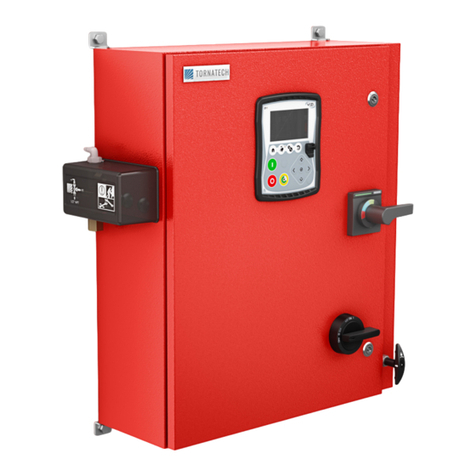
Tornatech
Tornatech GFX Installation and maintenance manual
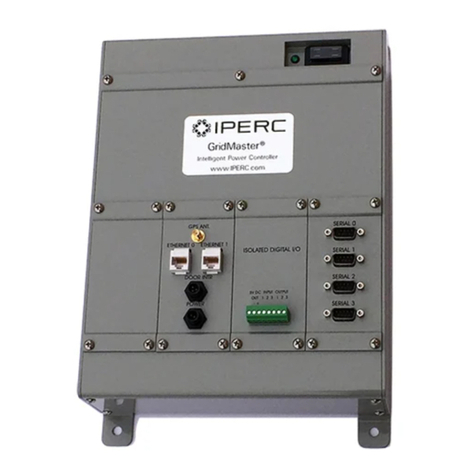
S&C
S&C GridMaster Installation
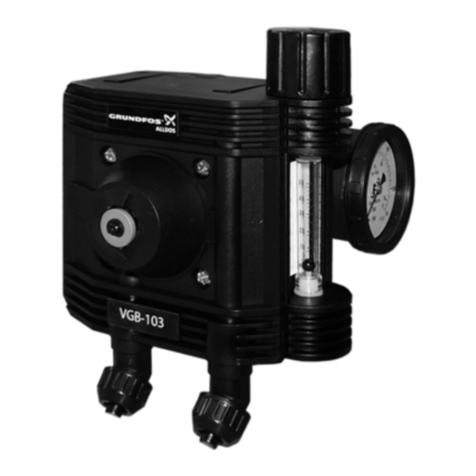
Grundfos
Grundfos Alldos Vaccuperm VGB-103 Installation and operating instructions
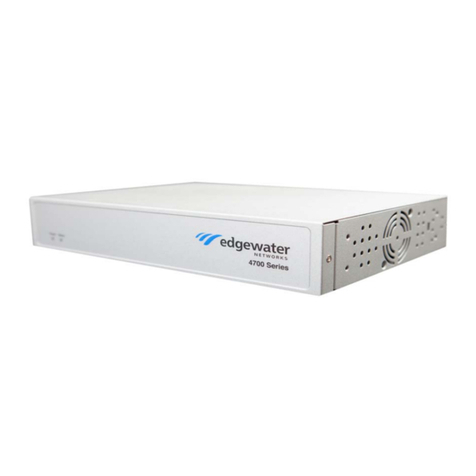
Edgewater Networks
Edgewater Networks EdgeMarc 4700 Series Hardware installation guide
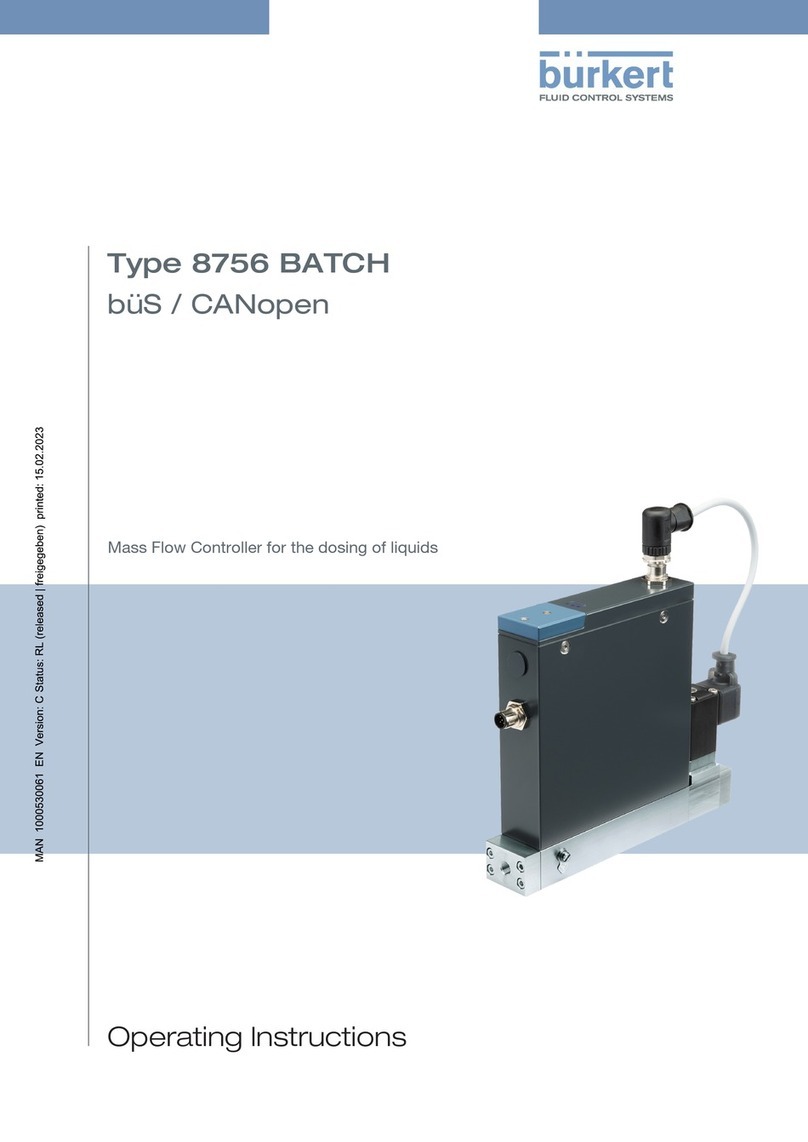
Burkert
Burkert 8756 BATCH operating instructions
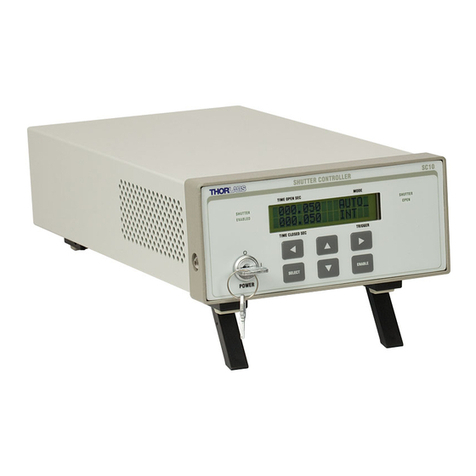
THORLABS
THORLABS SC10 user guide
